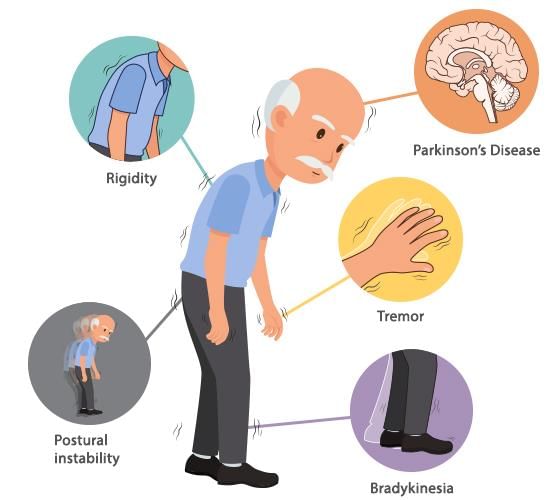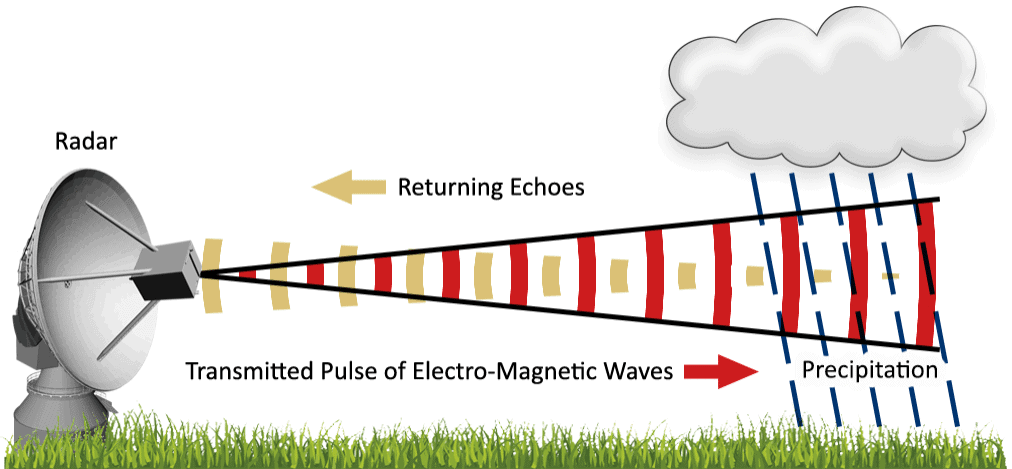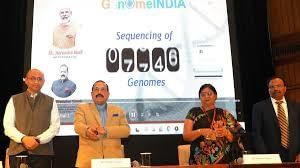Science and Technology - 3 | Current Affairs & Hindu Analysis: Daily, Weekly & Monthly - UPSC PDF Download
Precision Medicine and Biobanks
 Why in News?
Why in News?
The field of precision medicine is advancing towards a new era of personalized healthcare, significantly influenced by the completion of the Human Genome Project (HGP). This innovative approach is now integral in the diagnosis and treatment of various diseases, including cancers, chronic conditions, immunological disorders, cardiovascular issues, and liver diseases.
Key Takeaways
- What is Precision Medicine? It is a treatment strategy that tailors healthcare based on individual genetic, environmental, and lifestyle differences.
- Role of Biobanks: They are essential for storing biological samples crucial for research and enabling advancements in precision medicine.
- Market Growth in India: India's precision medicine market is on track for significant growth, with projections indicating a CAGR of 16% and expected revenues exceeding USD 5 billion by 2030.
Additional Details
- Precision Medicine: This approach focuses on customizing medical care for individuals rather than applying a one-size-fits-all method. It enhances the ability of healthcare professionals to predict effective treatments and preventive measures for specific populations.
- Role of Biobanks: Biobanks collect and preserve biological samples, such as DNA, cells, and tissues, which are critical for research. They help identify rare genetic disorders and support broader applications in precision medicine.
- Recent Approvals: In 2023, India’s Central Drugs Standard Control Organisation approved NexCAR19, a domestically developed CAR-T cell therapy. Additionally, a dedicated center for CAR-T cell therapy was established at IIT Bombay in 2024.
- Genome India Programme: This initiative has sequenced 10,000 genomes from 99 ethnic groups, aiming to identify treatments for rare genetic diseases.
- Regulatory Challenges: India faces significant regulatory hurdles in biobanking, unlike countries with comprehensive regulations, which hampers the full realization of precision medicine's potential.
In summary, precision medicine represents a transformative shift in healthcare, emphasizing personalized treatment strategies supported by biobanks. While India is seeing promising growth and advancements in this field, addressing regulatory challenges remains crucial for maximizing its benefits.
Parkinson’s Disease (PD)
 Why in News?
Why in News?
A recent breakthrough study has identified a significant factor in the progression of Parkinson’s disease: 24-OHC, a cholesterol metabolite that appears to promote the spread of harmful protein aggregates in the brain.
Key Takeaways
- Parkinson's disease is a progressive neurodegenerative disorder primarily affecting movement.
- The average onset age for Parkinson’s is around 60 years and is more prevalent in males.
- Currently, there is no definitive lab test for diagnosing Parkinson's disease.
- While there is no cure, treatments are available to alleviate symptoms significantly.
Additional Details
- Parkinson’s Disease: A condition that leads to the deterioration of nerve cells in the brain, particularly in the substantia nigra, resulting in symptoms like tremors, stiffness, and balance issues.
- The loss of dopamine-producing neurons in the substantia nigra is a key factor, with patients often losing 60 to 80% of these cells before symptoms manifest.
- Diagnosis: There are currently no blood tests or imaging studies that can confirm Parkinson's disease.
- Treatment: Although there is no cure, various treatments can help manage the symptoms effectively.
In summary, understanding Parkinson's disease is crucial for improving patient outcomes. Continued research into its mechanisms, such as the role of 24-OHC, holds promise for future therapeutic strategies.
Installation of X-Band Radar
Why in News?
Recently, the Ministry of Earth Sciences approved the installation of an X-band radar in Wayanad district, Kerala, following severe floods and landslides that affected the area.
Key Takeaways
- The X-band radar will enhance monitoring of soil particle movements to provide timely landslide warnings.
- This radar technology allows for rapid detection of changes in environmental conditions.
Additional Details
- About Radar: Radar is a device that utilizes radio waves to detect and locate objects by measuring the reflection of those waves. It stands for radio detection and ranging.
- Working of Radar: The radar system includes a transmitter that sends out a signal towards an object (e.g., clouds in meteorology). The signal is reflected back to the device, where a receiver analyzes the echo.
- Applications in Meteorology:
- Doppler radars measure the speed and direction of moving clouds by analyzing frequency changes in the returned signal.
- Pulse-Doppler radars can assess rainfall intensity by emitting pulses and tracking their reflections.
- The Doppler effect describes the frequency change of waves as their source moves toward or away from a listener.
- Doppler radars utilize Rayleigh scattering, where electromagnetic radiation is scattered by particles much smaller than its wavelength.
- X-Band Radar: This type of radar operates within the 8-12 GHz range of the electromagnetic spectrum, corresponding to wavelengths of approximately 2-4 cm. It is effective for observing smaller particles such as rain droplets and fog, offering higher resolution images but with a shorter detection range.

How Many Radars Does India Have?
- Historical Context: The India Meteorological Department (IMD) began using radar technology for weather monitoring in the early 1950s, installing its first indigenously designed X-band storm detection radar in New Delhi in 1970. By 1996, ten older X-band radars had been upgraded to digital technology.
- Types of Radar Network: India’s X-band radar network includes both wind-finding and storm-detecting radars, with some having dual capabilities. Additionally, S-band radars (2-4 GHz) are utilized for long-range detection, with the first S-band cyclone detection radar installed in Visakhapatnam in 1970.
- Recent Initiatives: As of September 2024, India plans to deploy 56 new Doppler radars as part of the Rs 2,000-crore Mission Mausam initiative aimed at bolstering meteorological infrastructure by 2026. The government is also acquiring 10 X-band Doppler radars for northeastern states and Lahaul and Spiti district in Himachal Pradesh.
- A C-band radar (4-8 GHz), with an observational range of 250 km, will be installed in Mangaluru.
In summary, the installation of the X-band radar in Wayanad is a crucial step forward in improving weather monitoring and disaster management capabilities in India, particularly in regions prone to landslides and heavy rainfall.
Moiré Materials and Superconductivity
Why in News?
A recent study published in Nature has revealed that moiré materials derived from semiconductors exhibit superconducting properties, a phenomenon previously believed to be limited to graphene.
Key Takeaways
- Moiré materials possess unique characteristics due to the interference patterns created when two repetitive structures are overlaid at a slight angle.
- The creation of moiré materials involves stacking two layers of a two-dimensional (2-D) material, such as tungsten diselenide, and twisting one layer by a small angle (approximately 3.65°).
- This twisting generates a moiré pattern that leads to new electronic behaviors not observed in the individual layers.
Additional Details
- Electronic Properties: The twisting of layers results in flat bands within the electronic structure, allowing electrons to move slowly with nearly constant energy. This slow movement enhances electron-electron interactions, which are essential for superconductivity.
- Research on Tungsten Diselenide (tWSe₂): This semiconductor moiré material has shown superconductivity at a transition temperature of around -272.93°C, which is comparable to that of high-temperature superconductors. Furthermore, the superconducting state in tWSe₂ is noted to be more stable than in other moiré materials.
- Comparison with Graphene Superconductors: Moiré materials based on tungsten diselenide achieve superconductivity through electron-lattice interactions and flat band formation, making them potentially more robust than graphene-based superconductors.
- Electron-lattice interactions refer to the interplay between electrons and the atomic lattice in a material's crystal structure.
The significance of these findings lies in the potential for stable superconductivity at low temperatures, which could facilitate practical applications in fields such as quantum computing and electronics. This research could pave the way for designing new materials tailored for future technological advancements.
MACE Telescope in Ladakh
 Why in News?
Why in News?
The inauguration of the Major Atmospheric Cherenkov Experiment (MACE) telescope in Hanle marks a pivotal advancement in the field of gamma-ray astronomy. This state-of-the-art telescope allows scientists to investigate gamma rays with energies exceeding 20 billion electron volts (eV), originating from various cosmic sources beyond the Milky Way, such as pulsars, blazars, and gamma-ray bursts.
Key Takeaways
- MACE is the highest imaging Cherenkov telescope globally, situated at an altitude of approximately 4.3 kilometers.
- It is the largest of its kind in Asia and the second-largest worldwide.
- The telescope employs an Imaging Atmospheric Cherenkov Telescope (IACT) to detect high-energy gamma rays indirectly.
Additional Details
- Operating Principle: When high-energy gamma rays enter the Earth's atmosphere, they generate electron-positron pairs, leading to the emission of Cherenkov radiation. MACE captures this faint blue light using its advanced technology.
- Design Features: MACE's light collector comprises 356 mirror panels arranged in a honeycomb structure, which enhances stability and reflective capacity.
- Research Objectives: The primary aim of MACE is to study high-energy gamma rays emitted by cosmic sources and to explore the nature of dark matter by detecting gamma rays from weakly interacting massive particles (WIMPs) and their annihilation events.
- Collaborating Institutions: The project involves contributions from the Bhabha Atomic Research Centre (BARC) and the Indian Institute of Astrophysics.
- Technological Innovations: The telescope is equipped with a high-resolution camera containing 1,088 photomultiplier tubes, which detect and amplify the faint signals of Cherenkov radiation, enhancing its observational capabilities.
The MACE telescope represents a significant leap forward in gamma-ray astronomy, facilitating deeper insights into cosmic phenomena and contributing to our understanding of fundamental questions in astrophysics, such as the nature of dark matter.
Centenary of Bose-Einstein Statistics
Why in News?
Recently, the centenary of Bose-Einstein statistics was celebrated, honoring Satyendra Nath Bose for his groundbreaking work on the concept of particle indistinguishability. His contributions laid the foundation for significant advancements in quantum mechanics, particularly the Bose-Einstein Condensate, and continue to influence modern physics.
Key Takeaways
- Satyendra Nath Bose was a key figure in the development of Bose-Einstein statistics.
- Bose's work challenged classical mechanics by introducing the idea of indistinguishable particles.
- The concept of Bose-Einstein statistics distinguishes between bosons and fermions.
- The experimental confirmation of the Bose-Einstein Condensate occurred in 1995.
Additional Details
- Satyendra Nath Bose: Born on 1 January 1894 in Calcutta (now Kolkata), he excelled in mathematics and was inspired by Jagadish Chandra Bose. His work on quantum mechanics led to significant contributions in the field.
- Bose-Einstein Statistics: Introduced in 1924 through his paper 'Planck's Law and the Hypothesis of Light Quanta,' this statistical approach counts particles as indistinguishable entities. Albert Einstein recognized its significance, leading to the development of Bose-Einstein statistics and the discovery of Bose-Einstein condensates.
- Bose-Einstein Condensate (BEC): A unique state of matter formed when bosonic atoms are cooled to near absolute zero, resulting in the merging into a single quantum entity with wave-like properties. This concept was experimentally verified in 1995 by Eric Cornell and Carl Wieman, who received the Nobel Prize in 2001.
- Relevance in Modern Physics: Discoveries such as the Higgs boson and advancements in quantum computing showcase the ongoing significance of Bose's principles in various fields including cosmology and condensed matter science.
- Awards and Honours: Satyendra Nath Bose was honored with the Padma Vibhushan in 1954 and served as India's National Professor for 15 years, a prestigious position for a scholar.
In conclusion, the centenary of Bose-Einstein statistics serves as a reminder of the profound impact Satyendra Nath Bose's work has had on modern physics and its continuing relevance in contemporary scientific discoveries.
One Day One Genome Initiative
 Why in News?
Why in News?
Recently, the 'One Day One Genome' initiative was launched by the Department of Biotechnology (DBT) and the Biotechnology Research and Innovation Council (BRIC) on the first foundation day at the National Institute of Immunology (NII) in New Delhi.
Key Takeaways
- The initiative aims to showcase India's unique microbial diversity and its significance in various sectors.
- Data from genome sequencing will be used to publicly release a fully annotated bacterial genome from India.
- Coordination will be managed by the BRIC in collaboration with the National Institute of Biomedical Genomics (NIBMG).
Additional Details
- Objective: The goal is to provide a comprehensive summary, infographics, and genomic data that highlight the importance of microbial diversity.
- Potential Benefits:
- Improved waste management and pollution control through a better understanding of microbial functions.
- Enhanced crop yields and promotion of sustainable farming practices by leveraging insights into beneficial microbes.
- Discovery of new treatments and drugs by identifying microbes with antimicrobial properties.
- Role in Environment: Microorganisms are essential for biogeochemical cycles, soil formation, and the breakdown of organic waste and toxic pollutants, such as anaerobic bacteria like Clostridium and methanogens that convert organic matter into methane and carbon dioxide.
- Role in Agriculture: They are crucial for nutrient cycling, nitrogen fixation, soil fertility, pest control, and environmental stress response. For example, Rhizobium bacteria form a symbiotic relationship with leguminous plants (e.g., beans, peas, lentils) to convert atmospheric nitrogen into ammonia that plants can utilize.
- Role in Human Health: Microorganisms are vital for digestion, immunity, and even mental health. For instance, Lactobacillus bacteria help break down lactose and other carbohydrates into lactic acid.
The 'One Day One Genome' initiative represents a significant step toward understanding and harnessing the power of microbial diversity in India, with implications for environmental sustainability, agricultural efficiency, and human health advancements.
|
38 videos|5275 docs|1115 tests
|
FAQs on Science and Technology - 3 - Current Affairs & Hindu Analysis: Daily, Weekly & Monthly - UPSC
| $1. What are the primary symptoms of Parkinson’s Disease (PD)? |  |
| $2. How does X-Band Radar work and what are its applications? |  |
| $3. What are Moiré materials and their significance in superconductivity? |  |
| $4. What is the One Day One Genome Initiative and its objectives? |  |
| $5. What are the health implications of Non-Alcoholic Fatty Liver Disease (NAFLD)? |  |
















